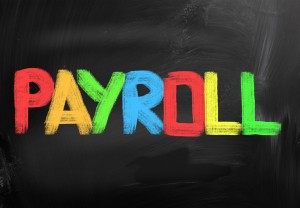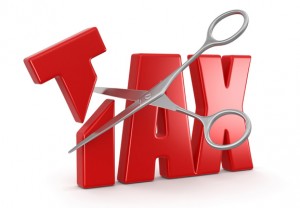Are you making money or just covering costs?
It’s a good idea at the start of a new financial year to undertake a business health check to ensure that your business is ready for the year ahead and is well placed to achieve more success and better profits.
A good place to start is to take a look at your business break even point now. Your break even point is the point at which you are not just working to cover costs but are actually generating a profit and putting some money in your pocket for all the hard work you do.
This is usually something businesses do when they first start out, but they often forget to keep an eye on their figures. Over the years the cost of running a business can creep up due to price increases and if you don’t monitor the effect of this on your bottom line and you simply absorb the cost, it can have a negative impact upon your profit margin.
If you don’t review your pricing you may find you are actually making less per sale than when you started out in business. This means that you have to work harder and longer and sell more just to maintain your profit! It is for this reason that undertaking a business health check in Perth is so important.
Stop giving away your profit
Review your break even point and identify how much money you need to generate today to cover all your costs. By really understanding all of your business numbers you can identify opportunities to improve your profit and business performance, plus it assists you to make informed decisions about your business, helping you to work smarter not harder.
How much does it cost to open your doors?
When running your business you have 2 types of costs you need to cover. Fixed costs like rent or mortgage payments, interest on debts, phone and Internet connections do not change no matter how much you sell.
The other type of costs are variable costs. These increase or decrease in line with your sales volumes and include materials and supplies, freight, commissions or extra labour to produce the goods.
Your break even point is the point at which your business generates enough income from sales to cover both the fixed and variable costs. So each sale needs to cover all the variable costs and the sale price needs to cover all of these and a bit extra which becomes profit.
Manufacturing business – calculating gross profit
Say your business makes wooden garden benches and you want to work out the gross profit margin on each bench. This is the difference between the selling price and its variable production costs. For example:
You decide a realistic market price for each bench is $120
Labour cost ($40) and materials ($25) for each bench totals $65
The difference between $120 and $65 is your gross margin of $55
What do you want from the business?
| Say your annual salary is: | $ 80,000 |
| The overhead costs of running your business are: | $ 20,000 |
| Therefore the gross margin you need on sales is: | $100,000 |
Calculating sales required
To find out how many benches you have to sell each year to meet your income goal, divide the required $100,000 annual gross margin by the gross margin per bench of $55. The result shows you need to sell 1,818 benches a year.
How does that average out per week? If you decide you want at least a four week break every year, divide 1,818 by 48 weeks and your break even sales target is 38 benches a week.
Do you think you can sell an average of 38 benches a week? Remember, this is break even only. It will pay your required salary, but there’s no extra profit margin to grow your business.
Service business – calculating gross profit
In a service business you’re selling your time, so you can take a slightly different angle. Let’s presume the goals remain similar and you’re working alone, except for one part-time person doing office tasks so you can spend more time with customers. Their salary adds $20,000 to your overhead costs.
What do you want from the business?
| Say your annual salary is: | $ 80,000 |
| The overhead costs of running your business are: | $ 40,000 |
| Therefore you need to invoice customers: | $120,000 |
Time available
You work 5 days a week for 48 weeks or 240 days a year. Subtract 15 days for sick leave and public holidays – this gives you a total of 225 working days.
You work 8 hours a day but allow 3 hours for travelling and preparing quotes and tenders. This leaves 5 billable hours a day.
Hourly charge-out rate
Now you’re ready to calculate your charge-out rate.
Billable hours a year = 5 x 225 working days which totals 1,125 hours.
Divide your goal of $120,000 by 1,125 billable hours and your minimum charge-out rate per hour is $107. Remember that this is just the break even figure to cover your costs and desired salary. There’s no extra profit to market and expand the business.
Questions to ask here are:
- How does an hourly rate of $107 compare with the industry average? Is it competitive?
- Can you really bill out $535 a day (107 x 5 billable hours) or $2,675 for each 5 day working week?
Try calculating your own figures to see what hourly rate you come up with and decide if the rate is both competitive and feasible. Will you be able to meet that goal of 25 billable hours each week? Your business will be running at a loss until you reach that target.
Use a cash flow forecast
A cash flow forecast is a useful way to check your break even calculations. Completing the forecast will force you to think more carefully about both variable costs and fixed costs. Get advice if necessary from an accountant because a proportion of some costs such as extra electricity use, may properly belong in variable costs of production rather than fixed costs.
Completing the sales side of the cash flow forecast will also help you identify how long it might take for your venture to break even.
For example, in the manufacturing example above the business needed to sell 1,818 garden benches over the course of the year. However, demand would likely be very slow in the winter months before picking up again in the spring. Meanwhile, the business’ running costs still have to be paid every month.
The bottom line figure for each month will show you when the business is likely to break even and how much funding you will need to keep the business going until then.
Make sure you are covering your costs and maximising your profits. Next week we will focus on reviewing pricing for your products as this is the other key element when it comes to making a profit and ensuring the health of your business. If you would like help and support reviewing your business’ financial health for the new financial year ahead, call us today on 9204 3733 for an obligation free review.








Comments are now closed for this article.